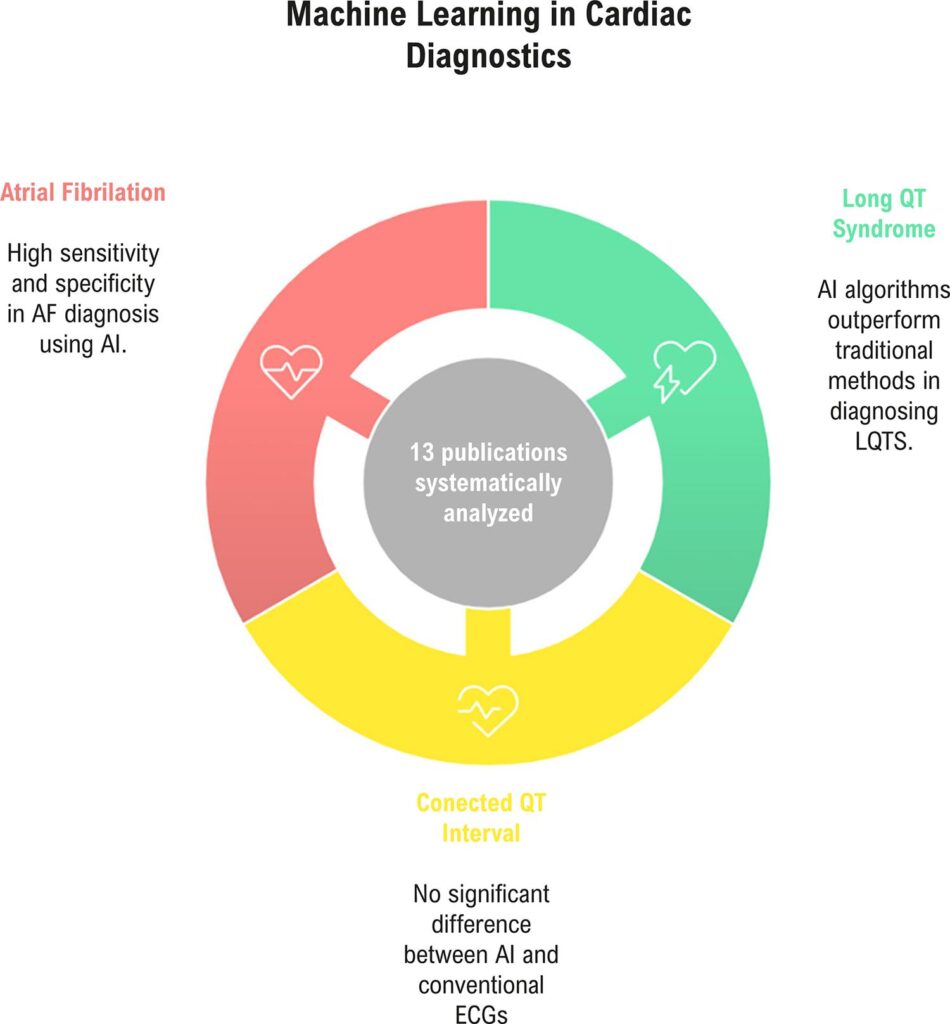Arq. Bras. Cardiol. 2025; 122(8): e20240843
Applicability of Machine Learning Algorithms in Diagnosis of Atrial Fibrillation and LQTS by Electrocardiogram Interpretation: A Systematic Review
This Original Article is referred by the Short Editorial "Applicability of Machine Learning Algorithms in the Diagnosis of Arrhythmias – How Long Until The Machine Starts Teaching Us?".
Abstract
Background
Machine Learning (ML) is a type of algorithm that autonomously learns to recognize complex patterns. In the diagnostic context of cardiac arrhythmias, these algorithms have shown significant advancements due to their ability to provide automated interpretation and pattern recognition in electrocardiograms (ECGs).
Objective
To analyze and identify the applicability, validity, and feasibility of ML algorithm models in the diagnostic process of cardiac arrhythmias through automated electrocardiogram interpretation.
Methods
This systematic literature review was reported according to the PRISMA guidelines. The searches were conducted in the Cochrane Library, EMBASE, LILACS, and PubMed between February 2022 and November 2022. The study period encompasses articles published between 2017 and 2022.
Results
The database search yielded 119 results, covering three subthemes: Long QT Syndrome (LQTS), corrected QT interval (QTc), and atrial fibrillation (AF). AF was the most prevalent theme. The sample sizes were quite variable. The outcomes were mostly satisfactory. In the diagnosis of LQTS using Artificial Intelligence (AI), the algorithm outperformed conventional methods in diagnostic distinction. In the evaluation of QTc, there was no difference between the AI-integrated ECG and the conventional ECG. In the diagnosis of AF, the algorithms, models, and devices demonstrated high sensitivity and specificity, along with greater accuracy.
Conclusion
ML models in the diagnostic process of cardiac arrhythmias are feasible and rapidly developing. They demonstrate accuracy values between 96.4% and 98.2%, sensitivity between 92.8% and 99.4%, and specificity between 95% and 98.1%, particularly in the diagnosis of atrial fibrillation.
276

